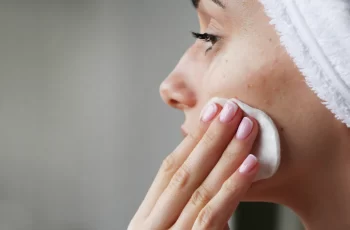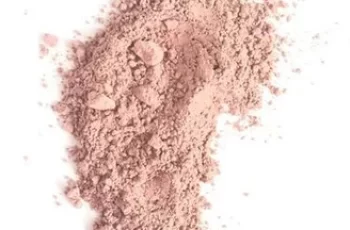
Can You use BHA With Retinol?
It’s perfectly normal to feel a little like a mad scientist when applying your skincare products. If you’ve been around these parts for a while, you may be feeling a little more confident when it comes to which ingredients work together. Don’t worry if you’re new though, as today we will be diving into finding out more about whether or not you can use BHA with retinol?
Let’s have a quick refresher of the benefits you can expect to see when using both BHA and retinol in your daily skincare routine.
What is BHA?
The most used BHA, also known as beta hydroxy acid, is salicylic acid which is derived from willow bark. Favoured by many who are prone to oily and blemish-prone skin due to its abilities to rid the skin surface of dead skin cell build-up, dirt, bacteria, and debris. It is also an acid that has the smallest molecular size and oil-soluble which means it can penetrate deeply into the pores and unclog them of any excess sebum or impurities that can lead to blemishes, such as blackheads and acne. Because of the high potency of this chemical exfoliant it is considered best to use with hydrating and nourishing ingredients, such as hyaluronic acid. If you are wanting to know more about BHAs, particularly salicylic acid, check out this blog post about its benefits on The Beauty Insiders.
What is Retinol?
One of the most potent and used skincare ingredients that is loved by the experts. Also known, as vitamin A, one of its main benefits is its ability to promote the skin cell turnover. This helps to improve the appearance of fine lines, wrinkles, uneven skin texture, dark spots, and breakouts. As you can see, retinol is multitalented ingredient and is also known for causing dryness and short-term side effects of itchy, flaky patches of skin. Because of this, retinol requires you to introduce it into your routine slowly and correctly to prevent any severe irritation and avoid potential damage. Find out more about retinol and its skincare benefits over on the blog.
Can you use salicylic acid with retinol?
The short answer is yes, but ensuring you use them in the correct way. You should avoid layering these two powerhouses as they are unable to play nicely together. But that doesn’t mean you need to not use either of them in your routine, it’s just a case of applying them during the optimal times of day.
Many skincare experts recommend using products, such as toners or cleansers containing salicylic acid during your morning routine, just make sure you finish your regime with a daily SPF. You can then follow this in the evening with your retinol product, this is also because retinol is known to lose its potency when exposed to sunlight.
If you are wanting to use salicylic acid in the evening you can, it just requires some more consideration to avoid any unwanted reactions. Ideally you should wait at least 30 minutes in between applications to allow the pH levels of the skin surface to rebalance and ready for the next stage in your skincare routine.
Can you exfoliate while using retinol?
No, it is best to avoid exfoliating when using retinol. This is because with the added chemical and physical exfoliation of the skin followed with an application of retinol will result in the skin becoming stripped of oil. Once the skin experiences this stripping it will begin to panic, and kick start an overproduction of sebum (the natural oil found in the skin). Excess sebum will result in a flare-up in breakouts and an imbalance in the type of skin you have.
Luckily, because it is advised to use retinol every other evening, you can exfoliate the skin the evenings you are not applying retinol. However, I would still suggest you consult with a doctor or dermatologist if you are introducing any new ingredients and products into your routine to avoid unwanted reactions.
Can you use salicylic acid and retinol in the same day?
Yes, you can, but just remember to be thoughtful about your application. As I have already mentioned, to reap the rewards of using both these ingredients you should alternate the time of day you use them. Seeing as retinol shouldn’t be used during the day, opt for a cleanser or toner enriched in salicylic acid during your morning skincare routine.
Remember to keep an eye on how your skin is feeling and if there are any signs of dryness or irritation that aren’t calmed with a hyaluronic acid serum then it’s best to seek the advice of a trained or medical professional.
What can you not mix with salicylic acid?
There are a number of skincare ingredients that should not be mixed with salicylic acid, such as.
Glycolic acid
Lactic acid
Benzoyl peroxide
Retinol/retinoids
Tretinoin
Vitamin C
Just to clarify what I have already mentioned, just because you are unable to mix any of these ingredients with salicylic acid doesn’t mean you shouldn’t use them in your routine. If there is at least 30 minutes in between applications or apply them during different parts of the day, you’ll be able to reap the rewards.
Which is better retinol or salicylic acid?
Both ingredients are impressive and effective at combating blemishes and breakouts, but at the same time work slightly differently on the skin. You’ll find that they are both able to reach the lower layers of the epidermis, with retinol helping to boost collagen and elastin production, whilst salicylic acid targets any blocked pores.
If its signs of ageing you want to address, retinol is the best ingredient to combat any concerns. As for any concerns with breakouts and blemishes, salicylic acid can make light work of spot causing impurities and bacteria. Deciding which one you would prefer and which more beneficial for your skin is down to personal preference and the skin concerns you are wanting to address.
There you have it, hopefully you have a little more clarity on whether you can use BHA with retinol. Don’t forget if you have any further questions, come, and follow us on Instagram!


